asteroid
Latest
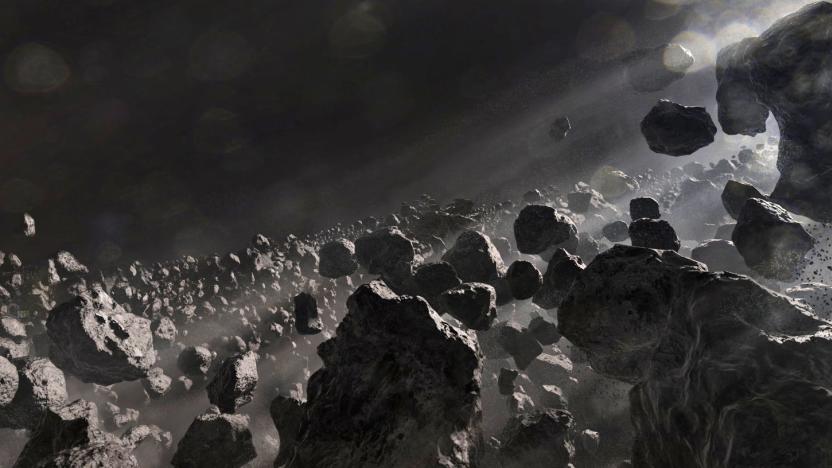
Asteroid family is as old as the Solar System itself
To date, astronomers haven't seen asteroid families (that is, asteroids with a common source) in the Solar System older than about 3 billion years -- well after the star system came to be 4.5 billion years ago. However, they'll have to rethink their expectations. Researchers studying asteroid data (including infrared radiation from the WISE space telescope) have found an asteroid family that's over 4 billion years years old, and likely as old as the Solar System itself. The trick was to both rule out existing asteroid families and look for the telltale signs of a very, very old group of rocks.

One single theory may have solved three Mars mysteries
We still aren't quite sure how Mars formed; there are many questions about its distinct geology and weird (but lovable) potato moons that don't really make sense. But now, a study in the journal Geophysical Research Letters may have solved some of the enduring mysteries of the red planet.
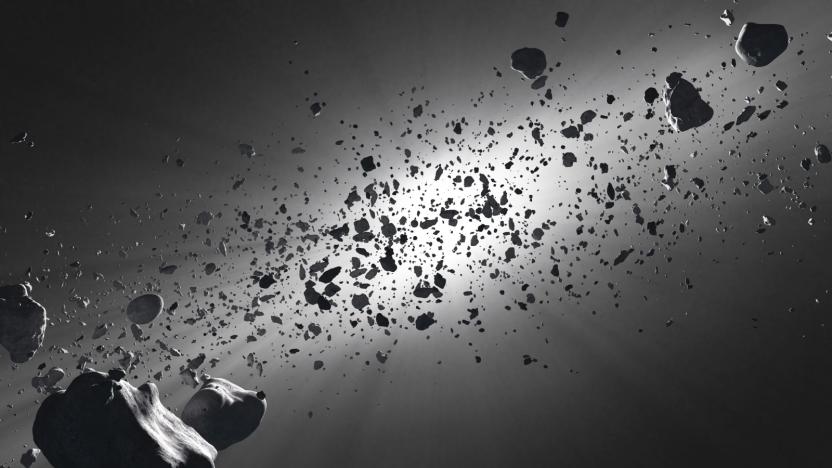
'Asteroid Day' is a good time to learn about the threat of space rocks
On June 30th, 1908, more than 770 square miles of remote Russian forest were obliterated from the face of the Earth when a relatively small meteor, estimated at only around 400 feet across, unleashed 15 megatons of energy above the Stony Tunguska River. One hundred and nine years later, humanity knows precious little more about the dangers that lurk within our solar system than we did in 1908. But a recently founded "global day of education" aims to bring the existential threat that space rocks pose to the forefront of our collective consciousness.
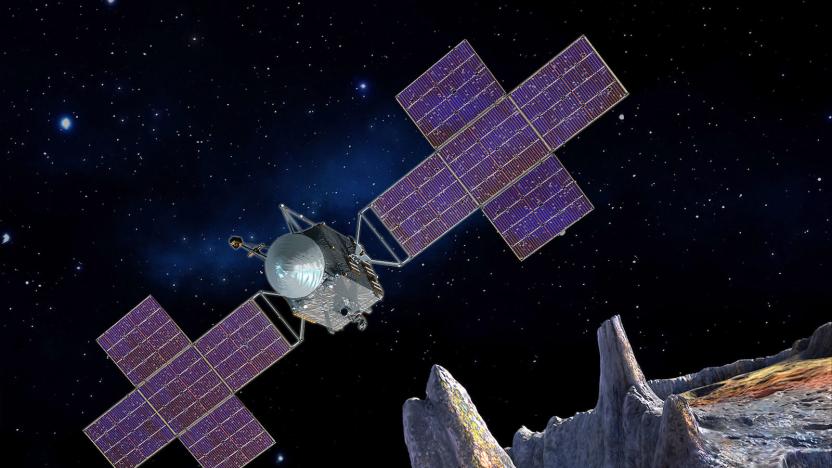
NASA probe on a fast track to reach metallic asteroid
While NASA's plans to put humans on Mars have suffered recent setbacks, its unmanned robotic programs are achieving milestones on a daily basis. Earlier this year, NASA announced that it had approved a mission, Psyche, to the asteroid belt. Today, the organization announced a shift in Psyche's launch schedule -- with big ramifications. Psyche 16 is a metal asteroid that may be the remnant of an early planet core. By studying the asteroid, scientists hope to learn more about Earth and the development of planets in our solar system. The mission was originally slated for liftoff in 2023, with arrival at the asteroid Psyche 6 in 2030. However, NASA directed the team to research whether an earlier mission would be feasible. After studying possible trajectories, they determined that launching one year early—in 2022—would shave four years off the spacecraft's journey. It's now expected to arrive at Psyche 6 in 2026.

NASA seeks comet 'crumbs' with a new detection technique
It's relatively trivial to spot comets, but spotting the dust they leave behind? That's no mean feat -- it's like tracking grains of fast-moving sand on a cosmic-scale beach. NASA, however, might just have a way of mapping that dust. It's developing a technique that would use the movement of the ESA's LISA Pathfinder probe to detect the minuscule "crumbs" left by comets and asteroids. The trick involves tracking the tiny thruster bursts Pathfinder uses to compensate for dust stream impacts. When you measure the direction and strength of those bursts, you can get a good sense of the dust's impact location, size and trajectory.

One of Jupiter's asteroid 'moons' is orbiting backwards
As a rule, you can safely assume that moons and asteroids will all orbit in the same direction. If they didn't, interactions with their host would likely send them flying off course. However, it's now clear that there are exceptions to this rule: researchers have discovered that an asteroid is crossing Jupiter in the opposite direction of all planets in the Solar System. These backwards-orbiting rocks are rare anywhere in the system (they represent just 0.01 percent of known asteroids), but this is the very first time one has been caught doing so in tandem with a planet. How is it sticking around, then?

Dwarf planet Ceres is 'oozing' with water
Scientists already knew via remote observations that Ceres, the dwarf planet (or humongous asteroid if you prefer), has plenty of water in it. The Dawn probe has now revealed that the asteroid is composed of as much as 30 percent water at the poles, explaining its ice volcano and weird bright spots. "It's just oozing," Planetary Science Institute's Thomas Prettyman told Nature, adding that you'd "just swipe and find the ice table" at Ceres' northern pole.
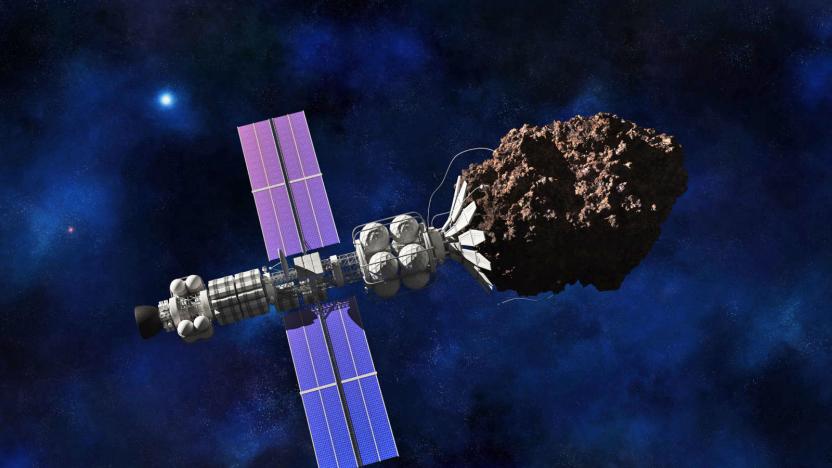
Space mining gets a boost through Luxembourg's new law
American asteroid mining companies are allowed to keep their hauls, but what about European outfits? They should be set from now on. Luxembourg (which already has its own space mining tech) has adopted a draft law that gives private operations the right to keep what they take from asteroids and other near Earth objects, so long as they get authorization for their mission and obey international law. This doesn't let anyone lay claim to spaceborne entities, the country says -- it just eliminates the uncertainty when that material arrives on the ground. The law should take effect sometime in early 2017.

ICYMI: NASA is going to colonize a space rock
try{document.getElementById("aol-cms-player-1").style.display="none";}catch(e){} Today on In Case You Missed It: Nasa launched the OSIRIS-Rex craft this week to begin its long and lonely mission to visit the Bennu asteroid. It'll return to Earth in seven years full of space rocks and hopefully nothing else. Meanwhile, Harvard Medical School has devised a way to see how bacteria evolves to become resistant to antibiotics.

NASA's asteroid-bound spacecraft will blast off in September
It's official: OSIRIS-Rex is blasting off to meet a near-Earth asteroid named Bennu on September 8th, NASA has confirmed at a press briefing. The spacecraft will launch from Cape Canaveral and travel for two years before it reaches its destination. Once it's on the object, it will spend another three years to take its temperature, 3D scan its surface, and look around for the best site to collect the 2-to-70-ounce sample it needs to take back home. That's right -- OSIRIS-Rex will be the first US spacecraft to grab a chunk from an asteroid as part of its round-trip journey. It follows in the footsteps of Japan's Hayabusa, which successfully brought home a sample after seven years in space. NASA expects the spacecraft to be back by September 24th, 2023, assuming everything goes according to plan.

NASA wants some assistance catching an asteroid
If you haven't heard yet, NASA aims to capture an asteroid, drag it to the orbit between the Earth and the moon and ultimately send people to scour it for samples. While that sounds like a crazy plot from an astronaut movie, it's very much real. In fact, the agency has just announced that it plans to ask for help from aerospace companies to make it happen. Under the new Asteroid Redirect Mission Umbrella for Partnerships (ARM-UP) Broad Agency Announcement (BAA) project, NASA will accept proposals for different aspects of the mission.

ICYMI: NASA hunts for life hidden in an asteroid
try{document.getElementById("aol-cms-player-1").style.display="none";}catch(e){}Today on In Case You Missed It: NASA is planning a trip to get a sample of the large asteroid Bennu and see if any organic materials can be found on it. If you remember hypercolor t-shirts, you'll want to know about an air pollution sensing shirt that changes color and patterns when carbon monoxide, radioactivity and particle pollutants are detected. You'll want to see this video from Japan showing a volcano's eruption with a thunderstorm inside. As always, please share any interesting tech or science videos you find by using the #ICYMI hashtag on Twitter for @mskerryd.

Newly discovered asteroid is Earth's cosmic buddy
Earlier this year, the University of Hawaii's Institute for Astronomy and NASA's Planetary Defense Coordination Office spotted a new companion that follows the Earth on its yearly journey around the sun. According to the Center for Near-Earth Object Studies, the asteroid lovingly named "2016 HO3" is "too distant to be considered a true satellite, but it is the best and most stable example to date of a near-Earth companion, or 'quasi-satellite.'"

Most of the Moon's water might have come from asteroids
For a while, scientists believed that water inside the Moon largely came from comets. However, they might have to rethink that belief. Researchers looking at Apollo mission lunar samples now suspect that most of the Moon's water came from asteroids smacking into the celestial body between 4.3 billion and 4.5 billion years ago, when it (and the Earth) was covered in a magma ocean. The key was to look at hydrogen isotopes. While comet water tends to be rich in deuterium, less than 20 percent of the Moon's water shows signs of it -- the isotope ratios were generally closer to that of the Earth, pointing to an asteroid origin.

Luxembourg's spacecraft will test its asteroid mining tech
Luxembourg is pouring some of its wealth into the development and launch of a spacecraft that could make it even richer. The tiny European country has teamed up with California-based Deep Space Industries to create Prospector-X, an experimental spacecraft designed to test some of their asteroid-mining technologies.

Scientists find a tailless comet from Earth's early days
It's well-established that the many asteroids and comets in the Solar System are the result of its violent early history, but finding an untouched example from the inner system is difficult. However, an astronomy team has discovered just that -- and it might shed a lot of light on our homeworld's early days. Thanks to both Pan-STARRS 1 and the Very Large Telescope, they've spotted a tailless, predominantly rocky comet (C/2014 S3) that has all the telltale signs of a "pristine" asteroid formed in the inner Solar System around the same time as the Earth, roughly 4.5 billion years ago. Its long, 860-year orbit hints that it was kicked towards the Oort Cloud (the system's extremely distant bubble of comets and other icy bodies) in the ancient past and only recently got pulled back toward the Sun.

NASA is funding asteroid spaceships and other far-out concepts
NASA's annual National Innovative Advanced Concepts (NIAC) program awards money to some of the craziest space projects you'll ever see, and this year is no different. The space agency has just announced the 13 concepts that made it through Phase I, and one of the most interesting entries plans to transform whole asteroids into spaceships. It's called Reconstituting Asteroids into Mechanical Automata or Project RAMA. The concept is the brainchild of Jason Dunn, co-founder of Made In Space, which developed the 3D printer that's aboard the ISS.

Key ingredient of life might have come from comets
Life on Earth might not have developed as we know it without a little sprinkling of sugar from space. A new study by a group of French scientists suggests the possibility that early Earth got its first dose of the simple sugar ribose from comets. Ribose, as you might know, is an important ingredient in RNA, which is one of the three macromolecules essential for life.
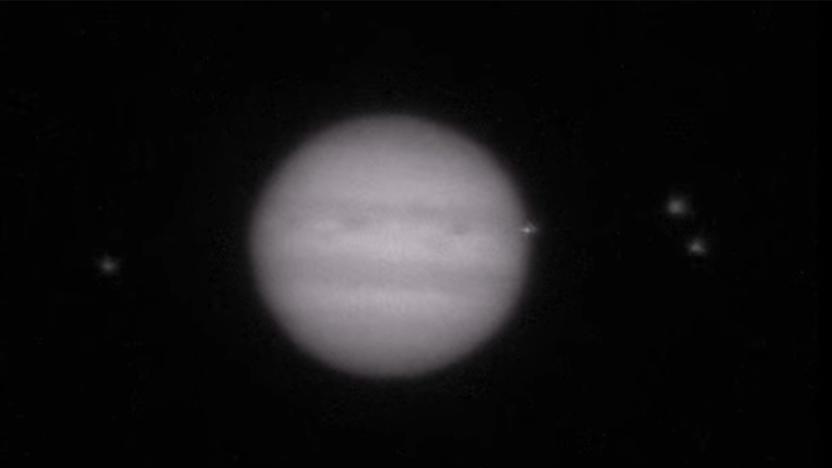
Amateur astronomers caught a Jupiter impact on camera
Jupiter gets hit by wayward celestial objects surprisingly often (about once per year), but you'd be forgiven if you didn't know it. Not all of them are visible, and professionals can only observe so much. However, the rise in readily accessible astronomy tech just helped detect one of these encounters. Amateur astronomers from Austria and Ireland have recorded videos showing that something, most likely an asteroid or comet, struck Jupiter on March 17th. The collision only lasted for a split second (blink and you'll miss it in the videos below) but it was ferocious -- even if the object was only a few hundred feet across, Jupiter's intense gravity guaranteed a high-velocity impact that would be visible from Earth.
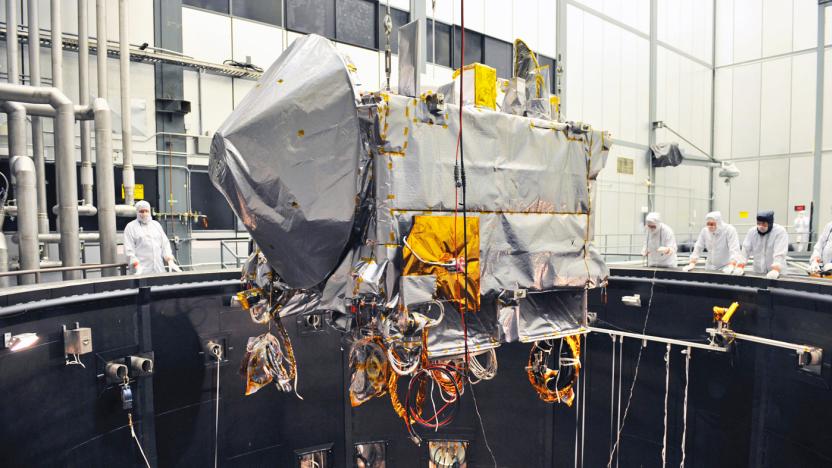
NASA's asteroid explorer faces tests that simulate space
Before NASA's OSIRIS-REx spacecraft can visit an asteroid to collect samples, it'll have to run a tough gauntlet. The probe is undergoing a 22-day thermal vacuum test that will see whether or not it can function in the unforgiving conditions of space. On top of working in an atmosphere-free environment, it'll face temperatures as cold as -274F and the periodic heat of a simulated Sun. So long as OSIRIS-REx makes the grade, it'll largely be ready for its September launch and the epic 7-year journey toward the asteroid Bennu.






